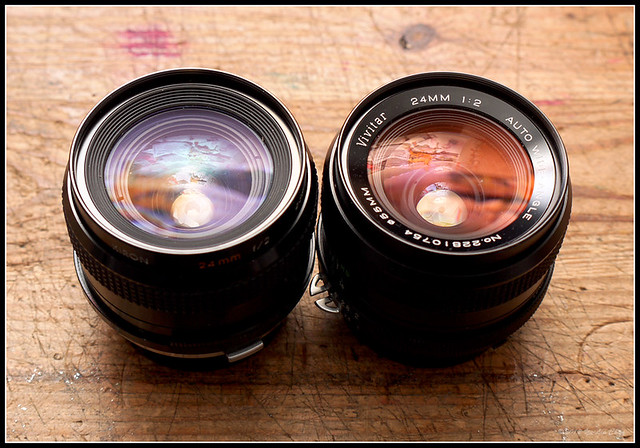The sad fact about cameras with crop sensors (1.5x, 1.6x, 2.0x, etc), is that equivalent wide angles are hard to find, or very expensive; often both hard to find AND expensive. For Micro 4/3 system, a very wide 20mm lens on full frame becomes 40mm, which is not even considered wide angle any more. The APS-C sensors fares slightly better. The 20mm lens is equivalent to 30mm on 1.5x and 32mm on Canon APS-C cameras. Still wide but no longer ultra wide. Anyways, I will be talking about wide angles in full frame terms, or true focal lengths. If you are looking for exotic lenses/focal lengths, sorry to disappoint you. I don't have any, and can't afford anything like the Distagon 21mm f2.8 or the Olympus 21mm f2.0. What you will see are readily available lenses that most of us can afford.
Tokina 17mm f3.5 -- I don't have any manual focus lenses wider than this, except the Takumar 17mm fish-eye. Truthfully, this is not a stellar lens, but is very cheap and more than good enough for everyday use.
Pentax-M 20mm f4 -- This lens is insanely sharp, but has some distortion. Definitely not a good choice for architecture. Under normal use, I don't find it objectionable. This is the lens that I almost always use on my IR modified Canon 20D.
Vivitar/Kiron 24mm f2.0 -- Keep in mind that Vivitar has more than one version of this 24mm f2. I used the 49mm filter size version before and found that wide open it has a lot of blooming and severely lack of contrast. The Kiron (55mm filter size) is much better wide open, but still has a bit of blooming, which is gone by f2.8. Very good optical performance, but do look out for sticky aperture blades. My Kiron 24mm f2 is completely stuck open, and the Vivitar (made by Krion) 24mm f2 is starting to stick. Also be sure to check de-centering. My Vivitar seems to be slightly sharper on the left edge than the right edge. These lenses have very good balance of value versus price.
Brothers -- Note the different coating. These two lenses could be made in different periods.
Twins -- Look identical except the mounts. One is Olympus and the other is Nikon AI.
Next time will talk about my favourite 28mm and 35mm lenses.


hi! been following your blog. thanks for the info.
ReplyDeleteThanks Emmanuel for your compilation of the lenses I have mentioned in my blog. It amazes me that I have/use so many lenses :)
DeleteYes, second that. I just purchased a Nex-5N and I'm having lots of fun with old lenses. Please keep sharing all this good information and great photos!
ReplyDeleteYes. The very short lens register allows the NEX to use pretty much all lenses out there.
Deletesome of these cheapies are surprisingly good. I never used to get what people waxed on about when I had these sort of primes on my 35mm. Now that I've had some time to do extensive analysis on the cameras like the NEX (Ok, I use Pana G but similar) I can see there often isn't anything other than spin and perhaps build quality (meaning you can treat it rough and it'll keep on keeping on) between these and the "legendary"
ReplyDeleteBought a Soligor 28mm for a friend and she's been making great images out if it
@obakesan: With most of today's primes are very good, even the older ones are very fine too. It's kind of a diminishing return on optical quality as you go high in price. Seriously, how much difference is there between a 50mm f1.2 and the 50mm f1.4? Not much really.
DeleteI wonder why you say you have no exotics, ("can't afford anything like the Distagon 21mm f2.8 or the Olympus 21mm f2.0.") Yet in the Pt II you list the Leica-R 28mm f2.8 Elmarit and 35mm Summicron R which are both about the same as the Distagon 21/2.8, £1000+ ($1,500) and the OM 21/2 sells around £600 ($1,000) for mint?
ReplyDeleteThe Leica-R 28mm f2.8 is very common and cheap, compared to the Distagon 21/2.8 and OM 21/2. Mine was under $300. Also true for the Summicron 35/2, which was $350. Both bought used of course. The M versions are far more expensive though.
DeleteIt seems there are several versions, I was thinking of ver. II R models. Even the ver I's are now about £400+ on ebay.
Delete